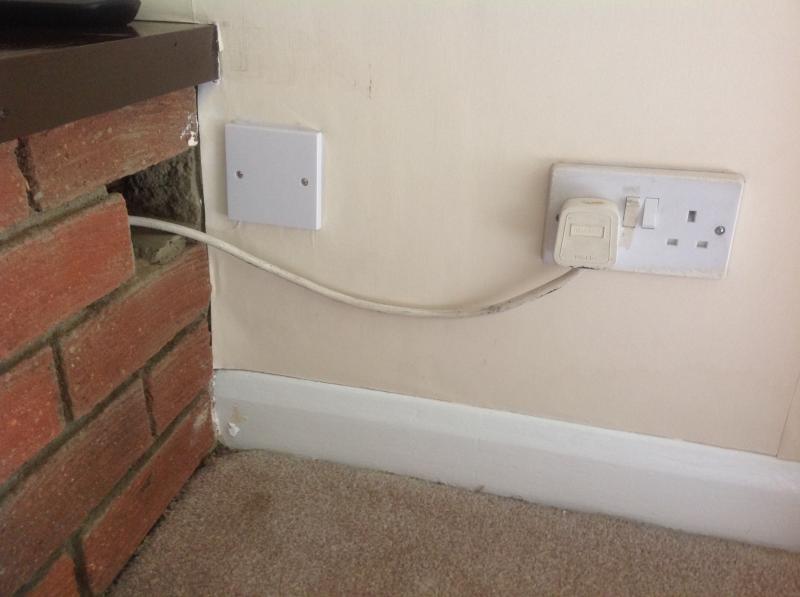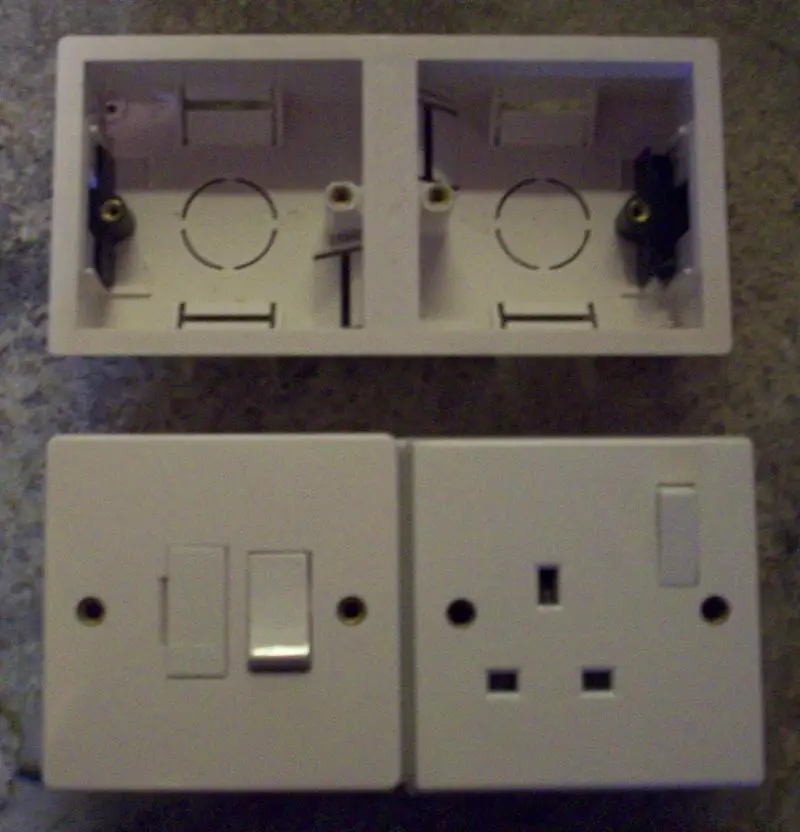Hi,
I want to sort out this eyesore. There's nothing behind the blanking plate, it's an old phone socket. The extension is 4 gang with a small load (5w lamp, cordless phone and a charger) and is hidden in the brick unit.
I was thinking of a spur from the double socket to a switched fcu where the blanking plate is, and then some sockets from the fcu hidden in the unit. I could then brick up the hole and use the fcu to turn off the hidden sockets.
Trouble is the existing double socket is already a spur. Can I go ahead or must it be redone such that the fcu is first?
I want to sort out this eyesore. There's nothing behind the blanking plate, it's an old phone socket. The extension is 4 gang with a small load (5w lamp, cordless phone and a charger) and is hidden in the brick unit.
I was thinking of a spur from the double socket to a switched fcu where the blanking plate is, and then some sockets from the fcu hidden in the unit. I could then brick up the hole and use the fcu to turn off the hidden sockets.
Trouble is the existing double socket is already a spur. Can I go ahead or must it be redone such that the fcu is first?



